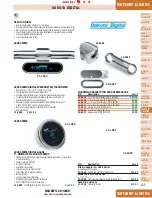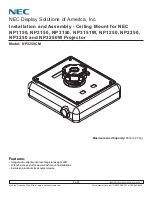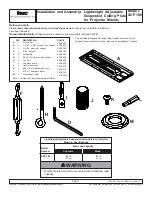
Symeo LPR
®
-System
LPR
®
-2DB
Product Documentation
Installation
Copyright © Symeo 2012
Page 41 of 132
5.2.3
Allocation of LPR-2DB Integral Stations and Installation Points
If a cell plan and/or a light pole allocation table is drawn by Symeo or together with Symeo,
the position and orientation of the LPR-2DB Integral Station must be installed referred to this
master document. The cell plan contains the LPR-2DB Integral Stations with a definite
identifier installed at the wall or on the light poles (compare chapter 7.1.1).
(0,0,0)
x
y
Short-ID: 101
Short-ID: 10M
Short-ID: 102
Short-ID: 103
Short-ID: 104
Short-ID: 100
Short-ID: 105
Figure 21
– Example Cell plan for one cell
LPR-2DB Integral Station
Installation
Cell
ID Angle
Pole
10
0
-143
LT-11
10
1
-90
LT-08
10
2
-41
LT-05
10
3
0
LT-06
10
4
180
LT-09
10
5
-180
LT-12
10
M
-40
LT-05
Table 1
– Example of light pole
allocation table
5.3 Installation of LPR antennas
5.3.1
Connection of antenna cables to the mobile units (LPR-2DB Station)
If several antennas are used, ensure that they are connected to the
correct ports.
When installing the cable, ensure that electrostatic charging does not
occur.
Make sure that the cable is not kinked or trapped during installation. The
minimum bending radius must always be maintained. With the standard
antenna cables delivered, the minimum bending radius (center of radius
to cable core) for standard cables is 10,5cm (for multiple bending under
mechanical load) and 4cm (unloaded and static bending). The cable
must not be attached in a way that alters its cross-section. On demand,
cables with different flexibility characteristics are available.
The antenna plug must not be removed (e.g. for installation purposes)
or repaired because the specified electrical properties can only be
achieved with mechanical installation assistance.
When installing the antenna cable, ensure that the screw connection is
seated properly. The antenna cable plugs should be finger-tightened
before tightening with an appropriate tool to no more than 1.3 Nm
















































